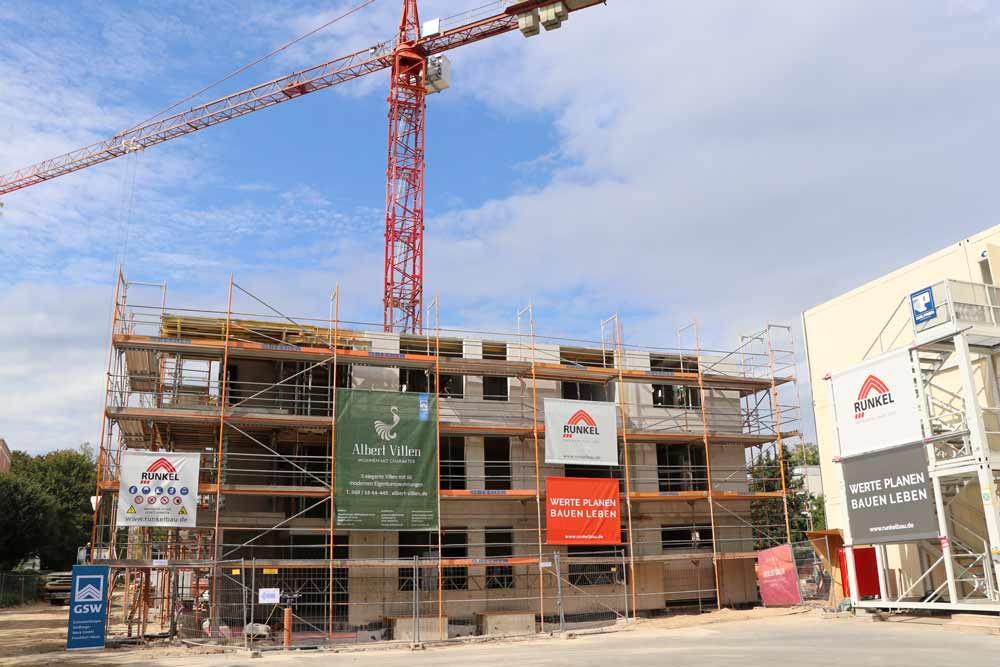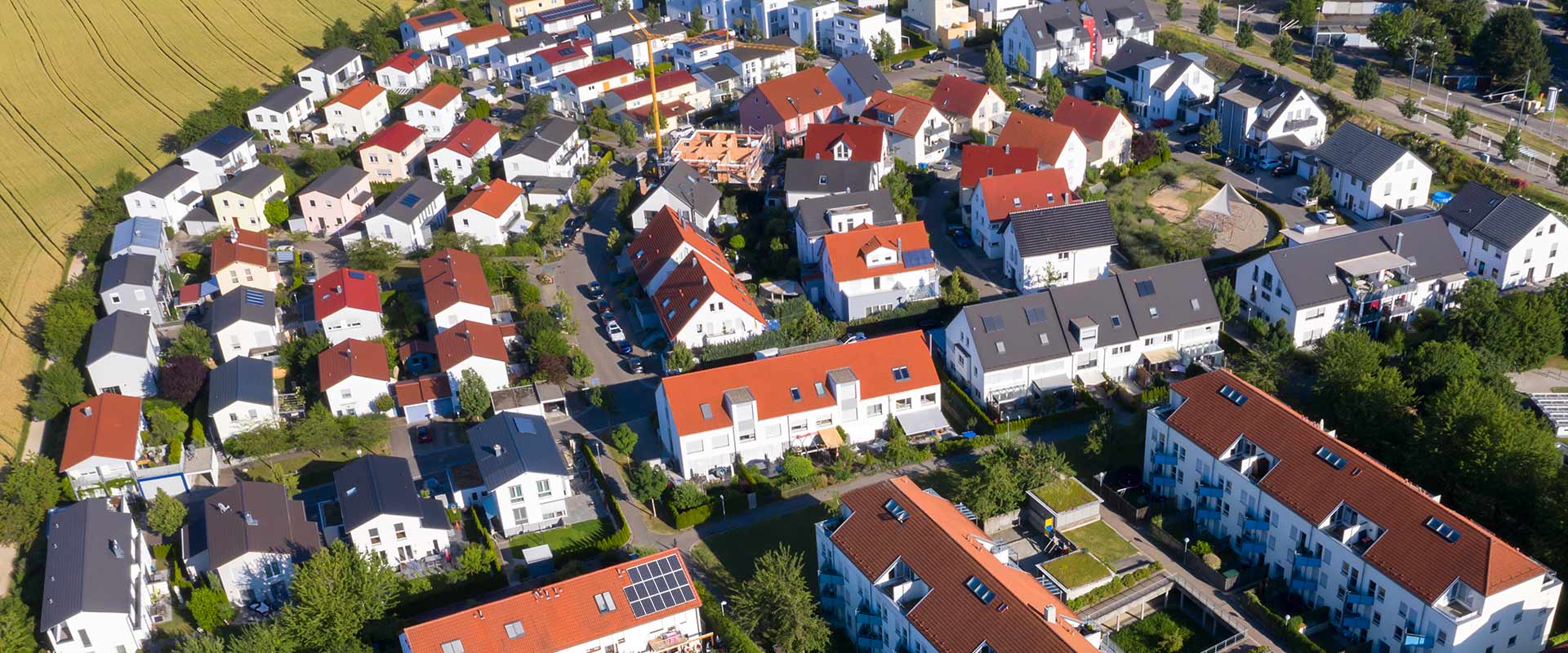Living west of the castle park
cold district heating networks in Wiesbaden
On the site of a former market garden in Wiesbaden, the new "Wohnen westlich des Schlossparks" ("Living West of the Palace Park") neighborhood was created in the immediate vicinity of one of the most important baroque palaces along the Rhine.
ESWE Versorgungs AG, the local energy supplier, is having five apartment buildings with a total of 67 residential units and 10 terraced houses built here, among other developments. The urban development company and the city's waste disposal companies are also on board.
Heat recovery from sewer
The main water canal runs underground along the settlement and leads to the nearby Biebrich sewage treatment plant. From this, ESWE, as operator of the new neighborhood, obtains the heat with which it supplies primary energy to the heat pumps in the connected residential buildings. For this purpose, a stainless steel heat exchanger, 112 meters long and 4,592 kilograms in weight, has now been installed on the canal bottom.
"The heat exchanger extracts thermal energy from the wastewater, which has a temperature of between 12 and 14 degrees, and transfers it to the district's cold local heating network," explains Sebastian Krämer. He is project manager for the supply of the new city neighborhood at the Wiesbaden ESWE.
THE ADVANTAGE OF USING WASTE WATER
The amount of wastewater in the sewer remains almost constant throughout the year and is at a high temperature level compared to other energy sources. This has a positive effect on the energy efficiency of the heat pumps.
The energy from the sewer is sufficient to supply the entire neighborhood with heat.
SPECIAL CHALLENGES
The cold network is ideal for combination with heat pumps. This is because the small temperature difference between the heat source and the flow temperature of modern surface heating systems also increases the efficiency of heat pumps.
SWP heat pump for multi-family dwellings
The five multi-family dwellings are equipped with an SWP 561H heat pump. These professional heat pumps are designed specifically for the supply of large properties and deliver an output of 50 kilowatts. Two large buffer tanks in each apartment building ensure that sufficient heating water is available to the apartments at all times. A large fresh water station is used to prepare the domestic hot water. It obtains the thermal energy needed for domestic hot water from the heating water in the buffer tanks.
WZSV heat pump for terraced houses
In the terraced houses in the neighborhood, a smaller heat pump of the WZSV type with 9 kilowatts of power operates in each house. Here, a 180-liter storage tank for domestic hot water is integrated into each heat pump. One advantage is that they work with frequency control. In this way, they align their heat generation with the respective demand. This makes them particularly efficient.
Living for the future
In the meantime, Wiesbaden's city planners and utilities are already thinking about how this type of environmentally friendly energy supply can also be implemented for other new development areas. Instead of waste heat from a sewer, so the thinking goes, geothermal energy could serve as an energy source.
.jpg)


